How To Get More Disk Space Windows 10
How to free up disk space in Windows 10
Begone, low storage infinite errors!
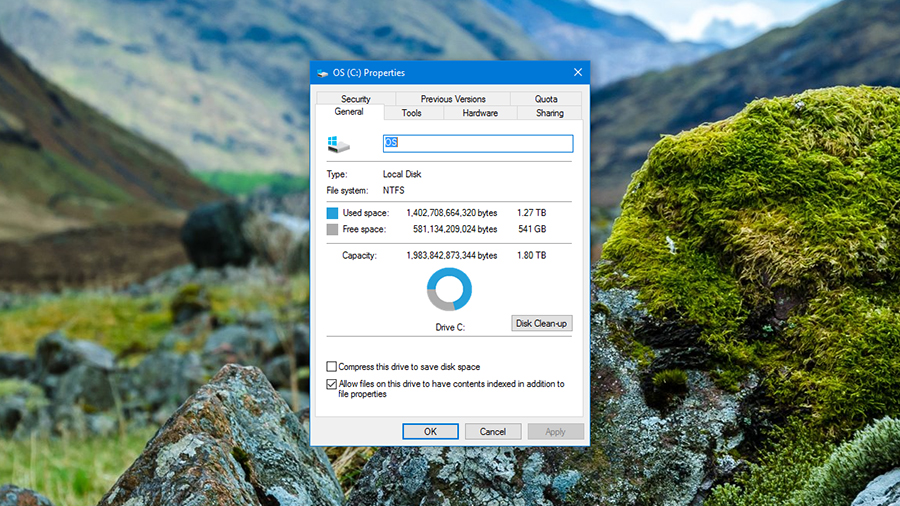
Introduction
Having an abundance of free infinite on your hard drive non only leaves room for your next batch of holiday snaps, it likewise makes certain Windows tin can run happily too - the Bone needs enough of breathing room while it goes about its business organization, swapping temporary files and so on, and if space is at a premium you'll probably notice your estimator slowing down.
Freeing up more than room is not a job yous desire to put off so, and we've got several tips and tricks for approaching the chore. You and your installed applications tin can be enjoying some actress gigabytes in no time at all.
- How to use Windows 10
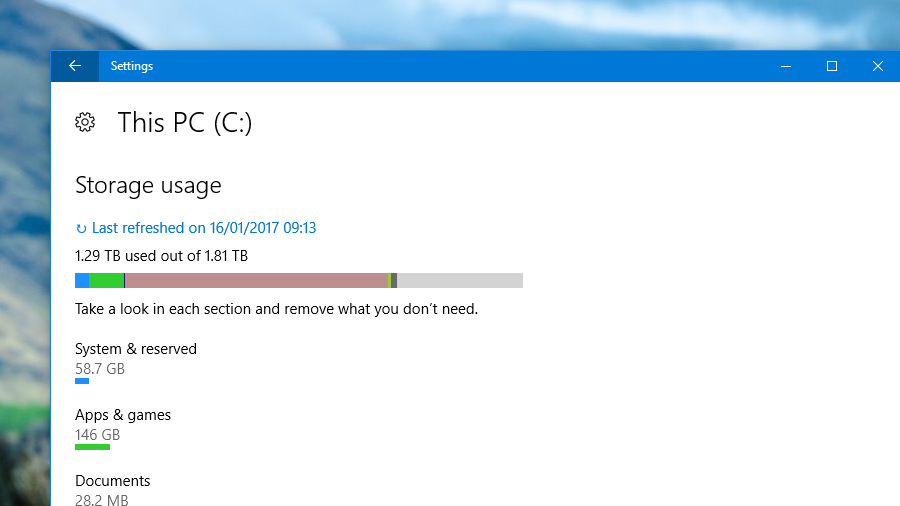
1. Identify the worst culprits
Get-go of all, put on your detective'south hat (if you accept one - if not, an imaginary ane will practice). Find out exactly what's taking upwardly all the room on your hard drive by launching the Settings app from the Start carte du jour and so clicking 'Organisation' and so 'Storage'.
Select your hard bulldoze and Windows very helpfully lists everything on your organization, including Windows files, applications, games, pictures, music, videos and so on.
If you lot need to take a closer wait, click on any of the entries. For example, click on 'Apps & games' and so choose 'Sort by size' to see if any of your installed programs are taking up huge amounts of infinite.
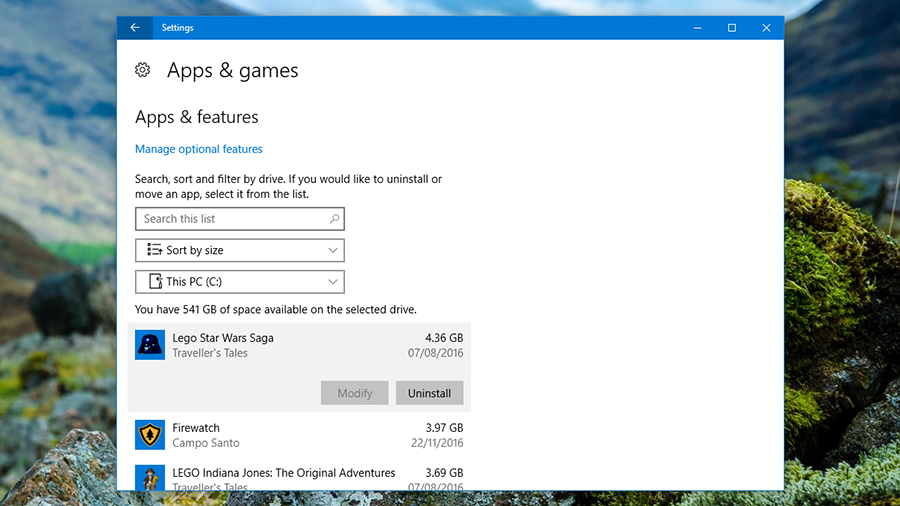
two. Remove unused apps and games
You tin't delete a lot of these files directly from the Storage window, though you lot can quickly notice them on deejay. In the case of apps and games in that location is the option to uninstall any big programs you lot're non using.
From the Apps & games screen, with the list sorted by size, you'll see the worst offenders at the elevation. Click on any entry in the list so choose 'Uninstall' to remove it.
It's up to you which apps and games you get rid of - it really depends how desperate you are to free up some space and how many unused applications y'all've got lying effectually on your hard bulldoze. Think y'all can ever install these programs once again if you need to.
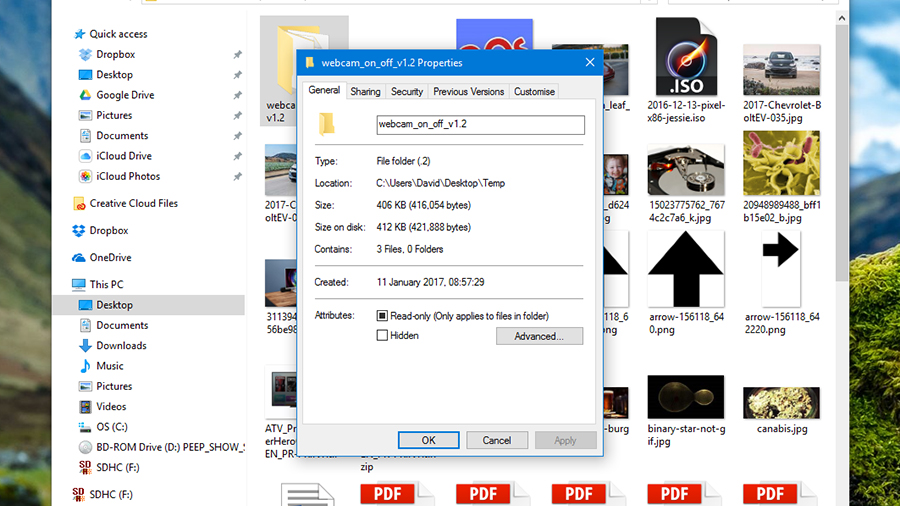
3. Manually delete files
Manually deleting files in File Explorer is a time-consuming but very precise way of freeing up room on your hard drive in Windows. Yous tin use any of the links in the Storage window we looked at previously to jump to particular folders, or you can just browse equally normal by launching File Explorer from the Kickoff menu.
Correct-click on any binder and choose Properties to meet how much room it and all of its subfolders are taking up - a quick tap on the Delete key will erase any file or folder. Concord down Ctrl while clicking to select multiple folders at once.
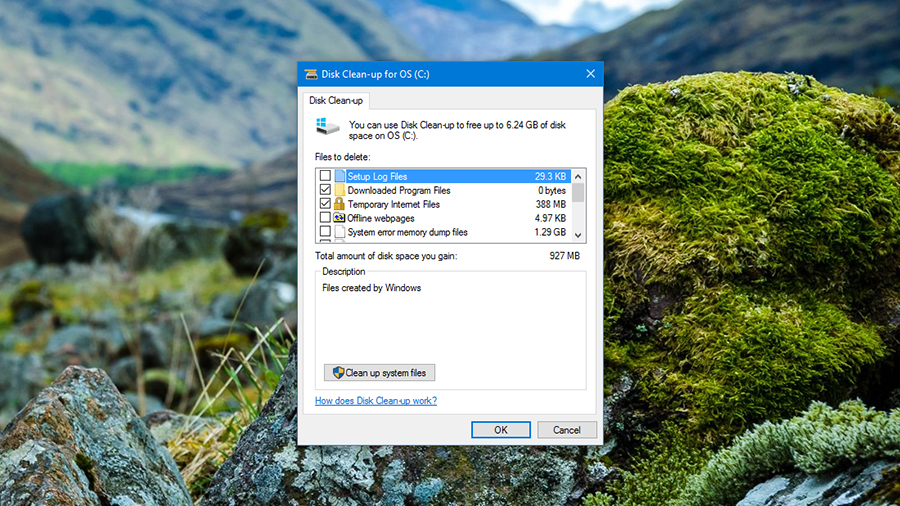
iv. Automatically delete files
Windows includes its ain Deejay Cleaner utility that volition do some bound cleaning on your hard bulldoze (in bound or whatever other season). It targets the temporary files and unneeded junk data that naturally builds upwards while you're using your OS.
From File Explorer, select 'This PC' then right-click on the hard drive you want to tidy up. Cull 'Properties', then under the General tab click on the 'Disk Make clean-up' push. After a few minutes of scanning, yous should run across a listing of file types together with how much space tin can be saved - choose all the ones you lot'd similar to clean up, then click 'OK' to confirm.
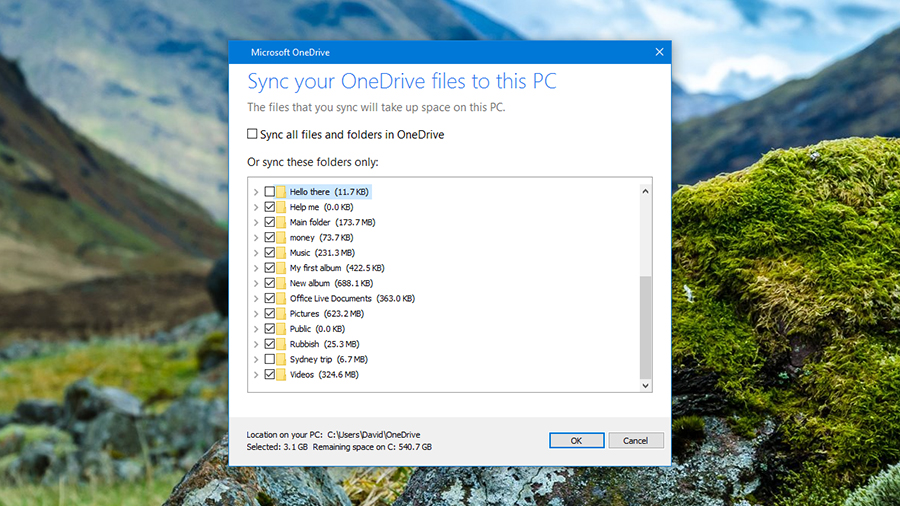
five. Movement your files to OneDrive
Thank you to the magic of OneDrive - Windows' built-in cloud syncing service - you can offload some of your files to the deject and gratuitous upwardly space on your local automobile.
From Storage (nether System in Settings), click your difficult drive, and so 'OneDrive', then choose 'Manage OneDrive'. Right-click on any file or folder, and select 'Choose OneDrive folders to sync'.
Untick whatever folders on the side by side dialog box and these files will be stored in the deject only, with the local copies erased (you lot'll demand to download them once more if y'all need them). For important files we'd recommend making a fill-in on an external disk drive as well, only to exist prophylactic.
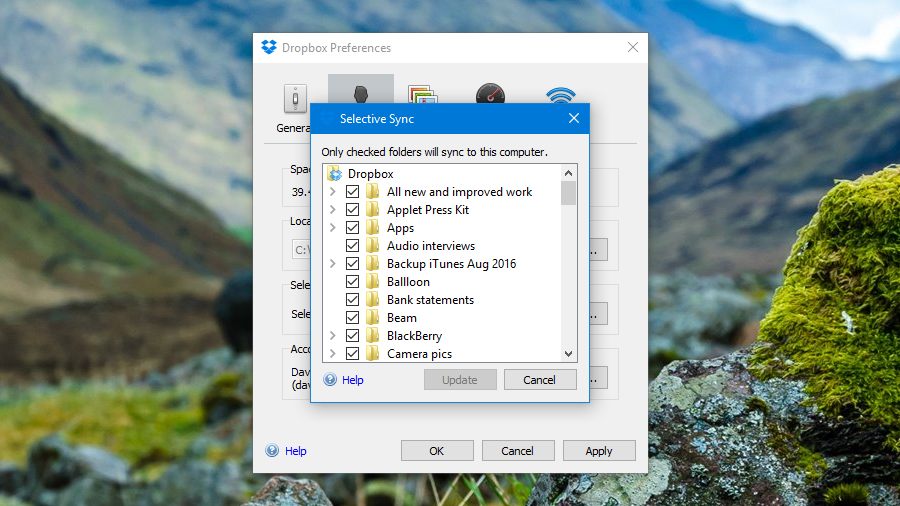
6. Move your files to another deject storage platform
The same fox we just described on OneDrive works on other deject storage services similar Dropbox (opens in new tab) and Google Drive (opens in new tab) likewise - once your files take been synced to the cloud, you can delete the local copies. Brand sure you don't simply delete the local copies and the deject copies at the same time, though.
On Dropbox, right-click on the notification expanse icon, click the cog icon, and and so select Preferences. Under the Account heading, click 'Selective Sync', and untick the folders you don't want to continue saved on disk.
In the instance of Google Drive, right-click on the notification area icon, and then click the menu push (three dots) and choose 'Preferences'. Under Sync options, select 'Sync these folders but', and once more yous can make your choice.
Every bit we mentioned above, it's a good thought to accept copies of your almost of import files stored on an external hard drive somewhere too, just in case something happens to the online versions.
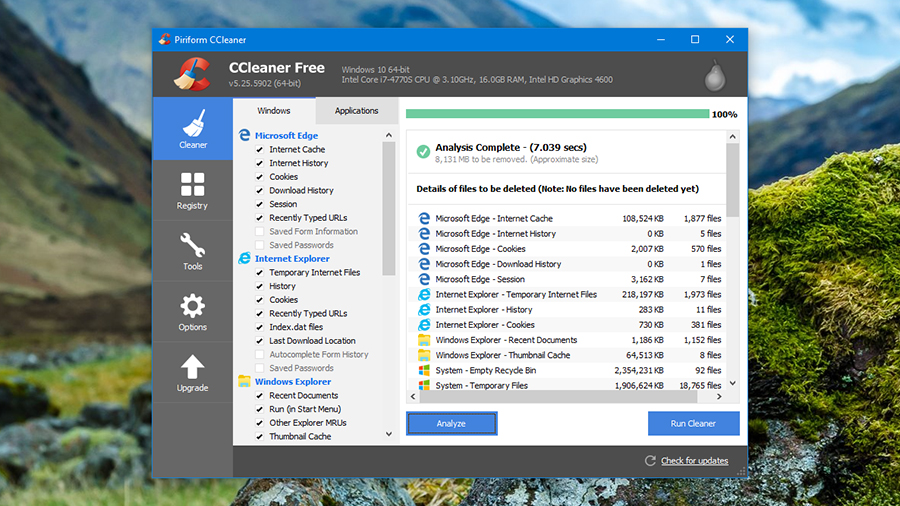
7. Utilize third-party utilities
There are plenty of third-party utilities eager to help you free upward some disk space on Windows too, with CCleaner (opens in new tab) beingness one of the best and most well-established. Information technology'due south available in gratis and paid-for versions, but even if you don't want to spend whatsoever cash, the gratis edition is well worth installing.
The awarding targets temporary files and data that you don't really demand - cached thumbnails, browsing history, Windows log files and so on. Make your choices from the list on the left of the primary Cleaner window, then click the Analyse button to run into what tin be cleaned upward. If you're happy to proceed, click on the 'Run Cleaner' push button.
- How to combine multiple hard drives in RAID 0 using Windows ten's Storage Spaces feature
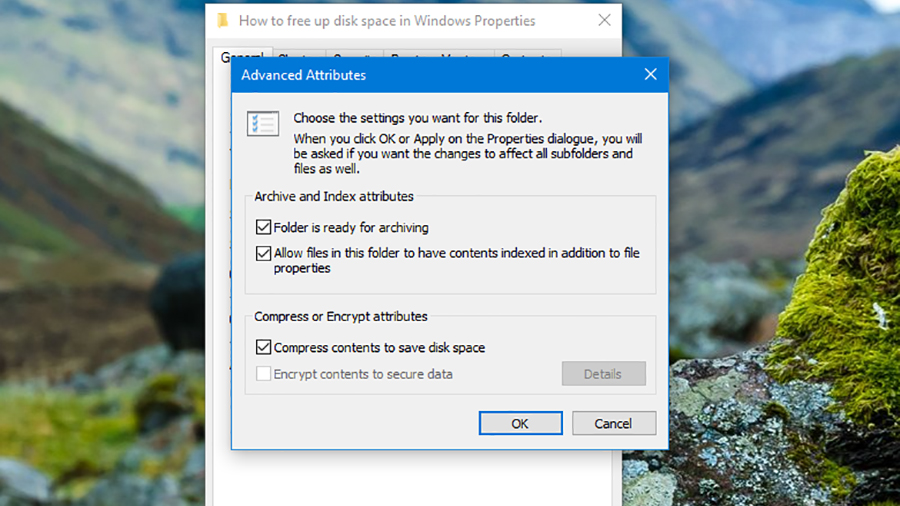
8. Other options for freeing up deejay space
There are diverse other options available to you, simply they're a bit more technical, and not quite as straightforward to implement. You can compress files on an NTFS disk, for case, though they will take slightly longer to open - right-click on a file or binder, choose 'Properties', then click 'Advanced' and tick the 'Shrink contents to salve disk space' option.
If you know you won't be using sure files for a while you can stuff them into a compressed annal using a tool such as WinZip (opens in new tab) or 7-Nil (opens in new tab). Meanwhile, hunting down and deleting duplicate files can work wonders on some systems, and apps such as DupeGuru (opens in new tab) and Duplicate Files Finder (opens in new tab) can assist you in your task (in that location'south also a indistinguishable finder built into the same CCleaner).
- Need more? Cheque out our Windows 10 tips and tricks master guide (opens in new tab)
How To Get More Disk Space Windows 10,
Source: https://www.techradar.com/sg/how-to/how-to-free-up-disk-space-in-windows
Posted by: roomdoduchis.blogspot.com


0 Response to "How To Get More Disk Space Windows 10"
Post a Comment